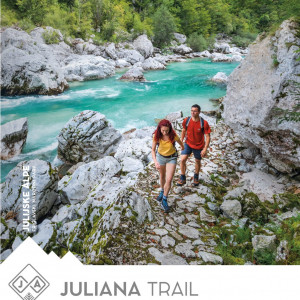HIKING IN BOHINJ
Bohinj is an ideal starting point for venturing into the world below Triglav, which is why Triglav was first conquered by the local Bohinj people. For hiking and mountaineering enthusiasts, Bohinj, from the lowlands to the highest peaks, is an inexhaustible source of ever-new experiences. There are more than 300 km of marked hiking and mountain trails in Bohinj.



Digitised trails in Bohinj
Browse through digitised suggestions for hiking and mountain trails in Bohinj. Each entry will provide you with a detailed map of the route, a step-by-step description, difficulty, duration and other details to help you plan your hiking experience.
Navigation with the appropriate app
On the road, we recommend that you use specialised apps that provide accurate and verified information, in addition to printed apps. We recommend using the SLOVENIA OUTDOOR mobile app (Android – Google Play, iOS – App Store) or the maPZS web app.
Online shop for hikers
Browse through maps, books, T-shirts and other products on hiking in Bohinj and the Julian Alps.
Always put safety first
For many of the trails in Bohinj, a good mood and suitable hiking shoes are enough, but others can be much more challenging. Of course, not everyone needs to go to Triglav, as a walk along the lake can be a real experience of colour and light, beautiful views and idyllic spots. Respect yourself and your limitations, as well as nature and its capricious ability to turn from an idyllic oasis into a dangerous experience in the blink of an eye. On the website of the Slovenian Mountaineering Association you can read detailed guidance on mountain safety in different situations and seasons.
Bohinj Mountain Rescue Service advises

Winter hiking
Winter hiking has its own special rules and requires even more preparation, knowledge and caution on the part of hikers. Find out what you need to know to walk safely in snowy mountains.







































